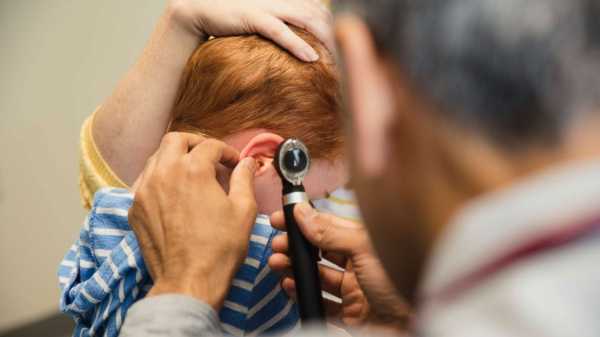
Dr. Walter Zahorodny, a pediatrician and autism researcher, is “stunned by the speed of increase.”
This data was collected in 2014 through the Autism and Developmental Disabilities Monitoring (ADDM) Network, an organization described by the study’s authors as “an active surveillance system that provides estimates of the prevalence of autism spectrum disorder (ASD) among children aged 8 years.”
In this study, the ADDM Network first identified over 10,000 children with symptoms of ASD in 11 states. A team of researchers and experts in the field then reviewed their medical and school records since birth, confirming an autism diagnosis in 5,473 children. This extremely thorough approach limited confusion and ensured accurate and consistent diagnoses and results. Part of the difficulty in autism research is that there isn’t a medical “test” that determines if a child falls on the autism disorder spectrum — it’s an evaluation based on observation, so reliable numbers have been historically difficult to guarantee.
The overall prevalence of autism was 16.8 per 1,000 children, or 1.68 percent, according to the study. This number varied between different states. The state with the lowest rate was Arkansas at 13.1 per 1,000 children. The state with highest rate was New Jersey at 29.3 in 1,000 children. There’s no reason given for regional variation.

STOCK PHOTO/Getty ImagesChildren kick a soccer ball in an undated stock photo.
Zahorodny, the lead researcher at the New Jersey site, states “3 percent is a real landmark, given that we started at 1 percent autism prevalence 14 years ago.”
These rates of autism are significantly higher than those in the last study from ADDM, which looked at a similar number of young children in 2012. This new study looked at exactly the same six locations that participated in 2012, and in these sites, the 2014 autism rates were 20 percent higher than they were in 2012.
Historically, the rate of autism in white children is 20-30 percent greater than black children and 50-70 percent greater than Hispanic children. In agreement with that previous data, autism was more common in white children, although there was a significant increase in the diagnosis in black and Hispanic children, with the prevalence in white children only 7 percent greater than in black children and 22 percent greater than in Hispanic children. In agreement with past studies, autism was about four times more common in boys.
One outlier: There was virtually no difference in autism rates between white, black, and Hispanic children in New Jersey. The authors argue that perhaps New Jersey’s overall higher autism prevalence is related to the more inclusive diagnosis of minority children, and therefore might be the most accurate rate in the study.
This study is not intended to be representative of the entire country. There are clear limitations, primarily because the data originated from only 11 collection sites. In addition, there were discrepancies in the amount and type of medical and educational data that was recorded from state to state. The data in this study is only as accurate as the information that was documented by physicians, counselors, and schools.
Why are more children than ever diagnosed with autism spectrum disorder?
The short answer: We don’t know.
The cause of autism is still unknown. There are associations between autism and prematurity, advanced parental age, and genetics — however no evidence of causation, according to the American Academy of Pediatrics (AAP). There’s also a lot of discussion about potential environmental causes, yet again, there’s no science to support these claims (the claim that vaccines cause autism has been disproven by the AAP time and time again).
To be diagnosed on the spectrum, a child must have three key characteristics: delayed language development, abnormal, repetitive behaviors, and difficulty socializing. Children with autism can have stereotypical behaviors such as rocking, spinning, hand-flapping, and toe-walking. They can also have difficulty making eye contact or playing with other children.
It’s important to know that there are many children that are NOT on the spectrum who may display these behaviors. The diagnosis of autism is made by looking at a child’s development, language, and behavior as a whole. If you have concerns about your child, you should speak with a pediatrician.
As the name implies, there’s a wide range in severity. While many children are able to do well in school and make friends with minimal assistance, others may need significant speech and behavioral therapy to function.
Which brings us to the treatment of autism: Therapy, therapy, and more therapy.
There’s no cure for autism, but certain types of therapies have been proven to improve a child’s ability to function in the real world.
One of the most alarming findings in this new study is the widespread delayed diagnosis of autism. The median age of diagnosis was 52 months, just over 4 years. Children with autism should be diagnosed by 3 years old and receive appropriate therapies by 4 years old, according to Department of Health and Human Services Healthy People 2020 goals.
We are diagnosing most children too late, according to these numbers.
“We need to have strong concerted efforts toward universal autism screening,” Zahorodny said in response to this data. The AAP states that all children should be screened for autism by their primary care provider at 18 months and again at 24 months.
Is autism really becoming more common?
It’s unclear if this rise in autism is due to an increase in diagnosis or an increase in the actual prevalence of autism. Some scientists argue that physicians are doing a better job at diagnosing autism, particularly in minority populations, and that’s why the autism numbers are up.
Thomas Frazier, the chief science officer at Autism Speaks, feels “there is a meaningful increase.”
Both Frazier and Zahorodny agree that while the increase in diagnosis is contributing to the prevalence, it cannot be the only cause. It seems the increase in autism is significant enough that many psychologists and pediatricians worry we’re missing a piece of this puzzle.
Sourse: abcnews.go.com






